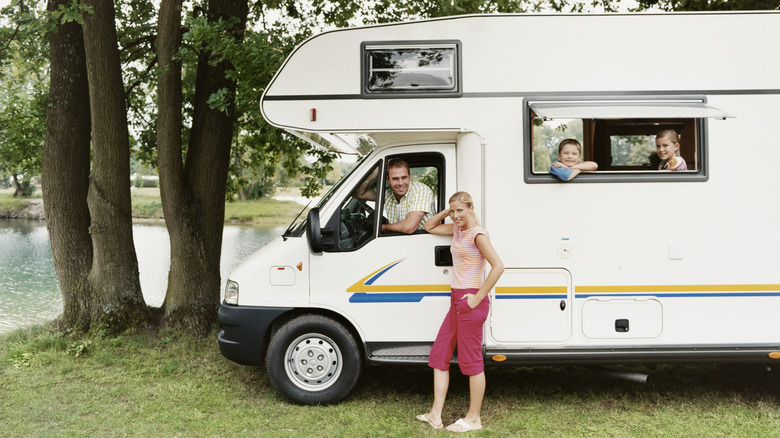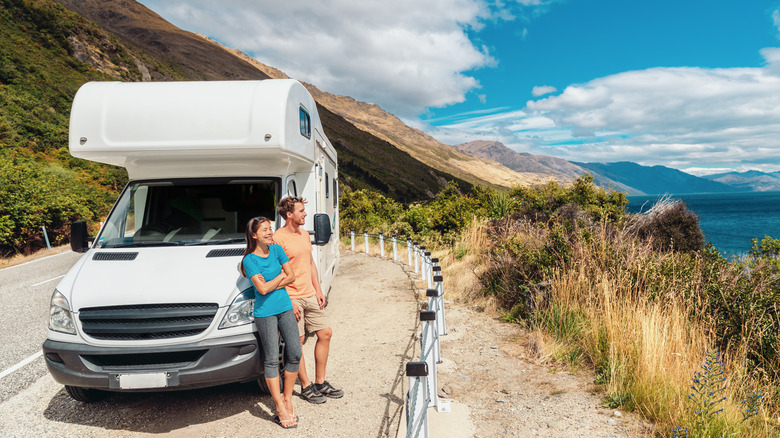Travel Guides Road Trips
Lexi Kassler
Sometimes, we can get so caught up in the excitement of a road trip that we forget to take some important safety precautions like planning out rest stops and setting expectations for how long to spend in one place. The 3-3-3 rule is a great way to remind ourselves that rest and relaxation are an essential part of a road trip, especially when traveling around in an RV. The rule goes like this: Never drive more than 300 miles in a day; arrive at your camp before 3 p.m.; and plan to stay at a destination along your route for at least 3 days.
By following this rule you can prevent accidents, get your camp set up safely, and actually be able to enjoy your trip while getting that R&R you need. While this isn’t the only rule out there, it is one that’s commonly used to keep RVers safe while on the road.
The 3-3-3 rule can keep you safe and well-rested

Digital Vision./Getty Images
So now that you know what the 3-3-3 rule is, let’s go over why each of those steps is so important. When driving an RV cross-country or just a very long distance, it can be tempting to try and get to your ultimate destination as quickly as possible. However, if you’ve ever driven even 100 miles in a day you can probably imagine the fatigue that sets in after another 200. If you’re doing all that driving, you might be putting yourself, your passengers, and everyone else on the road at risk. So, this is your sign to take stops along the way, switch drivers if/when possible, and plan your stops accordingly.
The next part of the rule is to arrive before 3 p.m. This is so you have time to set up your camp before the sun sets and so you can enjoy the area a bit on your first day there. This is also a good rule since most campground attendants are only on duty from 10 a.m. to 3 p.m., so if you need help with something and you’ve arrived after 3 p.m., you’re probably on your own until the next day. Finally, there’s the last part of the rule. By doing a bit of slow travel and staying at least 3 days, you’ll have time to recover from driving and the opportunity to fully enjoy the stop along your route.
Other numerical rules you can follow

Maridav/Shutterstock
If you find this particular 3-3-3 rule doesn’t work for your road trip plans, consider that it can also be adjusted. For instance, you can take a break after every 3 hours of driving. If you hate the monotony of driving, this can break it up into nice little chunks, making it a bit more manageable.
Similar to the 3-3-3 rule, you can try the 2-2-2 rule which is that you only drive 200 miles in a day, try to arrive before 2 p.m., and spend 2 nights at your destination. This means you’ll be making more stops along the road trip route with less time spent driving in a day. This is great for RVers who would rather stop to see more places along the way but spend a little less time there.
Meanwhile, the 4-4-4 rule involves longer driving times and longer stays at a single destination. With extended driving times, it’s recommended that you definitely have another person with you who is capable of driving an RV. This would also be a rule better left to those more experienced with RVs since it involves arriving later in the afternoon or evening when there will likely be no campground attendant available to help out.

